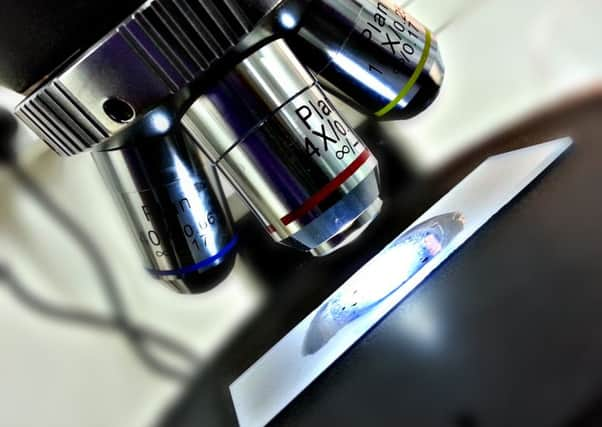Warning as R&D spend on Scottish pharma sector plummets


The news comes after the Association of the British Pharmaceutical Industry (ABPI) Scotland, which represents the research-based drugs industry north of the Border, recently commissioned the Fraser of Allander Institute to carry out a study of the sector’s economic impact.
The trade body said that, while the industry’s direct contribution to the Scottish economy grew 9.6 per cent to £824 million between 2010 and 2012, key research and development (R&D) indicators have fallen.
Advertisement
Hide AdAdvertisement
Hide AdBusiness R&D spend fell 21 per cent, or more than £32m, to £122m over the 11-year period between 2001 and 2012, the most recent data available, Fraser of Allander Institute said. Employment in pharma R&D dropped 28 per cent between 2007 and 2013.
The report, seen by Scotland on Sunday, also cites the threat of “fierce” global competition for R&D investment, saying that Scotland is competing not only with sophisticated scientific hubs in London, Oxford and Cambridge, but also internationally.
ABPI Scotland director Sandra Auld branded such competition “a huge threat”. She said: “It’s a global market and Scotland has to find its place within that [and] utilise its innate unique selling points.
“Scotland’s size can be a drawback, but also something very positive. It’s small enough to respond very quickly to environmental needs, and big enough to matter and be able to make a difference.”
Auld warned that if investment went elsewhere there would be a “knock-on effect” on the people of Scotland, who she said “should be able to access the newest medicines appropriately and as early as possible in those medicines’ lifespan”.
She added: “That’s ideally the position we want to be in where there is strong R&D development that makes the possibility that much more likely.”
The Scottish Government has outlined its plans to double the size of the life sciences sector by 2020, doubling turnover to £6.2 billion as it aims to achieve a “globally focused, sustainable life sciences sector built on a fully connected national strategy”.
In the Fraser of Allander report, Fergus Ewing, minister for energy, business and tourism, said that to hit the life sciences 2020 target “it is important that we are as focused on retaining and attracting global investors as we are at growing our Scottish SMEs [small businesses]”.
Advertisement
Hide AdAdvertisement
Hide AdEwing said: “When global companies are looking for sites in which to invest, I want Scotland to be first and foremost in their mind, whether it is for manufacturing, research collaborations or clinical trials.”
The study found that pharmaceuticals is Scotland’s second largest private sector for investment in R&D, spending £121m in 2012 – the latest year for which data is available and equivalent to 17 per cent of total R&D done in the year by Scottish businesses. The report has also led to the creation of a “pharma forum” with the Scottish Government to look at increasing the attractiveness of Scotland as a destination for life-sciences investment, in what ABPI Scotland said was a “major step forward”.
It said two “extremely positive” meetings had already taken place, and that “certainly there is a positivity there [and] a collaborative attitude and that’s a great starting-point”.